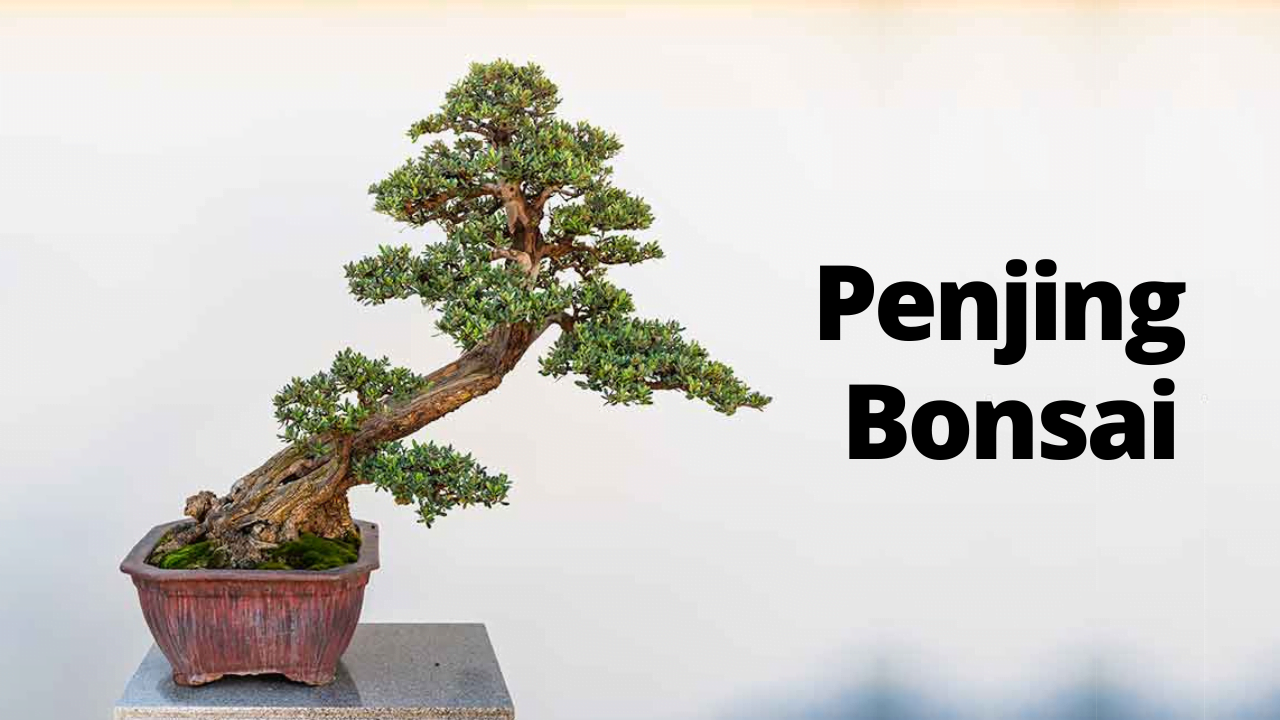Today, we are going to explore the basics of this ancient Chinese art form right from history to its making along with various styles.
Penjing bonsai depicts miniature landscape scenes. It is an ancient Chinese art form. Another name for Penjing is Penzai.
These landscape scenes feature living plants that artists and caretakers meticulously prune and grow to express their emotions. Penjing bonsai can portray whimsical, surreal scenes.
In addition, artists include miniature figurines, such as a horse or person, communicating a dream-like narrative of natural elements. Above all, this Chinese art form aims to embody the principles that govern nature.
Indoor bonsai trees are a beautiful addition to any home or office. These miniature trees can add a sense of peace and tranquility to your space, while also improving air quality. With proper care and attention, an indoor bonsai can thrive for years, bringing joy and beauty to your environment.
History of Penjing and Bonsai
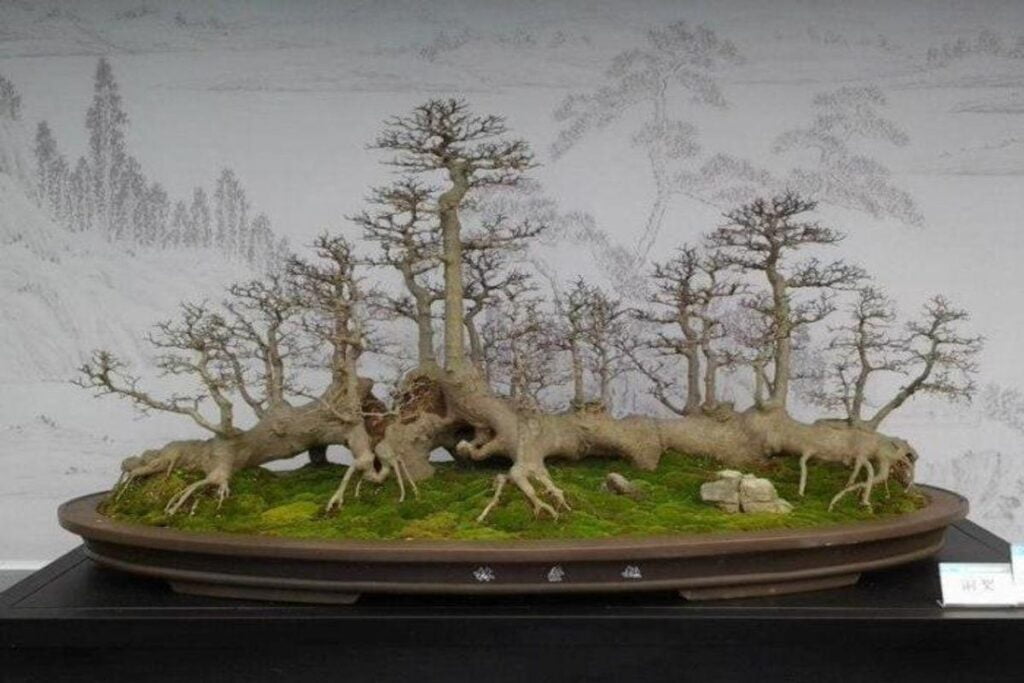
“Pen” means pot in Chinese, and “jing” is translated as scenery or landscape. In Chinese culture, these works of art convey a reverence and respect for nature that is deeply rooted in traditional art forms. They are living odes to mother nature.
Penjing bonsai is a style of art that simulates a wild, natural environment. Various plant types are shown in controlled landscapes. On the other hand, a bonsai is a more refined and controlled way of representing nature that was originally influenced by the Chinese practice of Penjing. But now, the Miniature landscape is a famous art form worldwide, delighting and enthralling children, botanists, and art collectors alike.
Since the 1st century AD (and perhaps even earlier), practitioners of Daoist mysticism have created miniature landscapes. It is perceived as a way to emphasize and enhance the properties of full-size sights. At the time, there was a myth that this art form could reduce the size of entire landscapes to the width of a pot.
In China, during the reign of the Tang Dynasty, the dynasty that ruled China from 618 to 907 CE, people began growing tiny trees and plants in ornamental pots. However, starting in the early 700s, this art of penjing was restricted to the royal families.
Nearly 200 years later, Buddhist monks introduced this penjing art to Japan, and new chapters in the history of cultivating mini trees were about to be written.
There are many theories regarding the start of the popularization and further development of the Chinese penjing art form into Japanese culture.
According to Iwasa Ryoji, a former professor emeritus at Chiba University, Japan, Chinese-style penjing was adopted by the Japanese as early as the Heian period.
Its theory was based on existing illustrations depicting Japanese people’s life during the Heian period (794-1185), showcasing small trees and stones placed in pots.
But research conducted in the 20th century has significantly questioned the precise date of these illustrations; for that reason, Professor Iwasa’s theory remains merely an assumption.
Without any doubt, during the Kamakura period (1185-1333), the Japanese had already embraced the practice of cultivating miniature trees in small pots and embedded much of their beliefs. After that, however, penjing gradually gave rise to bonsai, which incorporated the deepest beliefs and traditions.
The Chinese art of penjing has been studied extensively, and some studies indicate the practice of growing tiny trees in natural landscapes did not suffer as great a decline in China as other theories suggest.
According to the author of an extensive study entitled Informal History of Bonsai, even though the art of penjing never achieved the same popular reputation as bonsai in Japan, it continued to be practised for centuries without facing oblivion in China.
In today’s world, students usually take ten or more years to gain the necessary skills in their craft.
Styles of Penjing
China is a big country. That scale brings regional personality and differences. These differences are reflected in the style of the penjing bonsai, which differs based on geographical and cultural differences.
For example, there are Lingnan style, Taiwan style, Shanghai-style, and Yangzhou style. However, experts consider three main categories within these geographical categories.
Shumu
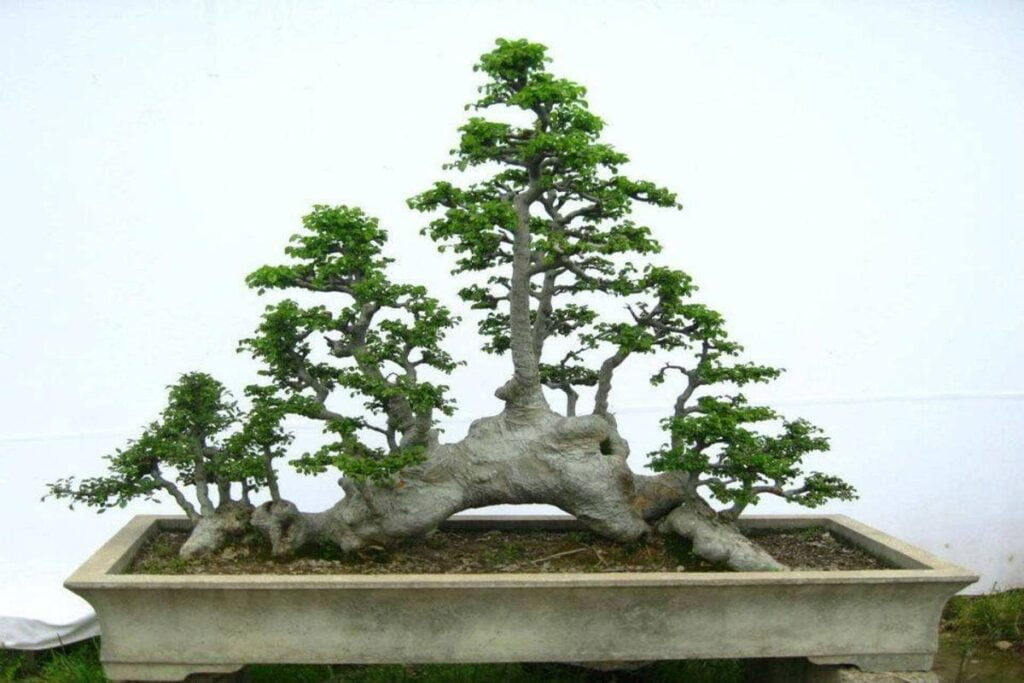
The Shumu is a landscape style of trees that artists plant within a container. Penjing bonsai cultivators define this style by trimming, pruning, and wiring the landscape into a cultivated vision. Moreover, the Shumu style is very similar to the bonsai traditions of Japan.
Shanshui
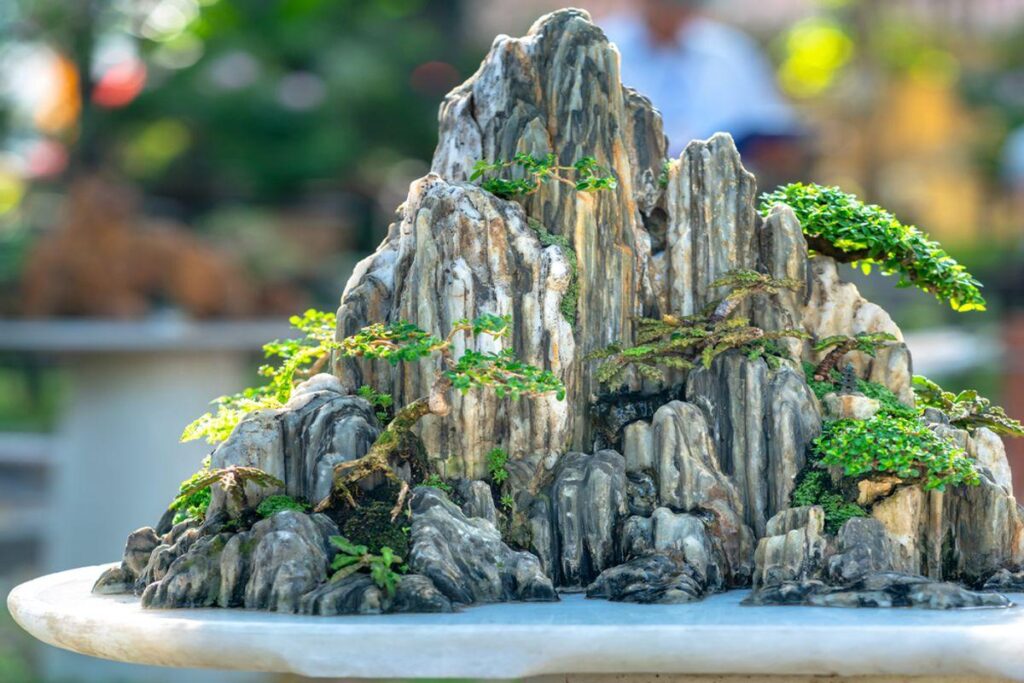
Shanshui penjing style features a rock inside a tray of water. Penjing grower carefully selects and places stones in the water. In addition, they incorporate small living plants into the composition as well.
Shuihan
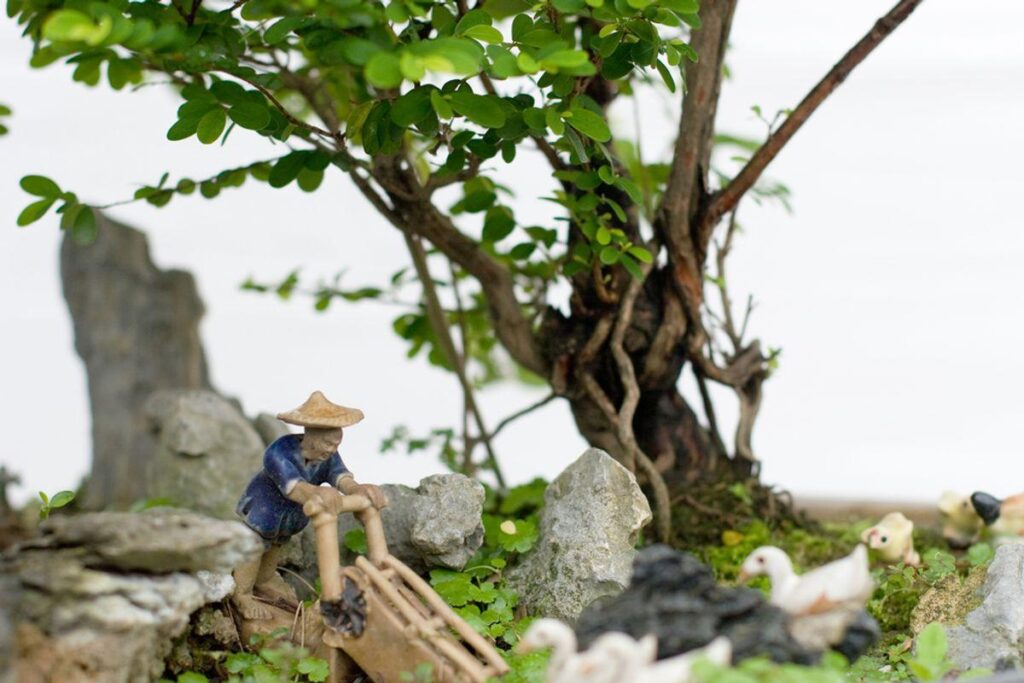
These style landscapes have miniature creations that might contain trees, rocks, water, and additional tiny figurines of houses, animals, and people. Artists combine the previous two styles to create this style. Hence, these detailed landscapes communicate an abstract narrative.
Penjing vs. Bonsai: Differences and Similarities

Do you also get confused between Penjing and Bonsai?
No worries, in this section, I am going to explain to you the differences as well as similarities between Penjing and bonsai.
So, starting from Chinese Penjing, it is creating miniature landscapes by cultivating different types of tiny trees alongside various natural or non-natural objects like ground covers, rocks, and small figurines.
In penjing, the possibilities are much more flexible regarding the kinds of landscapes that can be depicted. But, of course, this is all up to the artist’s imagination.
Talking Japanese bonsai, as its name implies, Japanese bonsai refers to the practice of cultivating miniature trees or shrubs in tiny containers to produce an authentic miniature version of how a tree or shrub would naturally grow.
With regular pruning, re-potting, wiring, and training of the trunk or bark and branches, bonsai trees achieve the desired shape and highly praised aged appearance.
The art of penjing and bonsai involves shaping trees through various methods, including regular pruning, trimming, and wiring.
Do not misunderstand these tiny trees as genetically dwarfed plants; they remain small due to the various techniques (pruning, training, and wiring) applied by the bonsai or penjing gardeners.
In nature, trees can live for hundreds of years. Some species can live for more than thousands of years.
But when it comes to the art of penjing or bonsai, they can live for an indefinite period and easily outlive their natural counterparts due to the constant promotion of new growth.
They are highly influenced by the concepts of Taoism, Zen Buddhism, and Confucianism. Also, bonsai and penjing are related in a sacred and meaningful way.
Even though the art of bonsai was influenced by penjing, it is a Japanese tradition that has managed to find its light and character.
How To Practice Penjing at Home

It might not be feasible for most of us to spend ten years studying at a botanical garden in Shanghai. But that doesn’t mean you can’t enjoy the beauty of this art form in your backyard or home.
So, to practice Penjing at home, follow the below steps.
- Firstly, get a shallow pot with an adequate drainage system.
- For almost all miniature landscapes, bright light and consistent temperature are needed.
- These two are easy steps but crucial ones, to begin with, Penjing. Next is research, lots and lots of research, or else imagine the scene in your mind the way you want to emulate or pay homage to and then work and research accordingly with the plants.
- Moreover, in the Western world, there is a blooming bonsai industry. You can get best-selling books and Pinterest boards to get ideas for your landscapes.
- Also, a local garden shop sells miniature-friendly varieties of plants, rocks, and moss.
- And the endless bonsai information on the internet is at your fingertips.
- A stubborn combination of curiosity and patient experimentation will be your important guide while growing these miniature scenes of striking beauty in your life.
Conclusion
Some regard penjing as simply decorative; however, the main intention of placing an array of tiny figures within a miniature landscape in this art is to show the connection between people and nature.
In essence, this is similar to how bonsai seeks to portray nature’s majestic power and beauty. It is an attempt to evoke a sense of nostalgia and higher awareness over the profound connection that mankind has in valuing and protecting nature.
How Chinese penjing has influenced Japanese bonsai throughout the centuries, and its complex interaction with Chinese penjing make it hard to identify their exact interactions.
Despite the differences between these art forms, the joy of witnessing the power of living nature in miniature is equally gratifying and difficult to describe, given that it’s best experienced from the heart.
Feel free to share your insights about penjing bonsai in the comment below.
Related Articles
- Propagating Chinese Elm Bonsai Cuttings And From Seeds
- Best Chinese Elm Bonsai Soil and Fertilizer.
- Troubleshooting Common Problems With Chinese Elm Bonsai
- Buy Chinese Elm Bonsai: How Not to Get Scammed When Purchasing a Chinese Elm Bonsai Tree!
- Chinese Elm Bonsai Pruning And Styling.
- Creating a Chinese Elm Bonsai Forest- Step-By-Step Guide.

